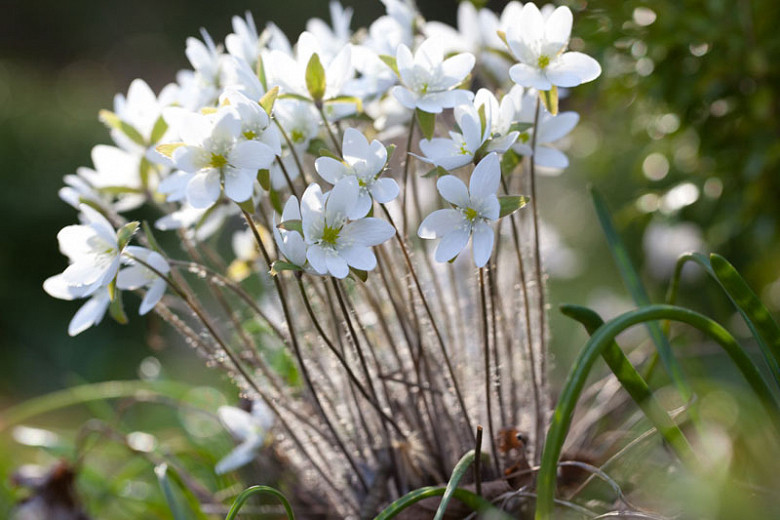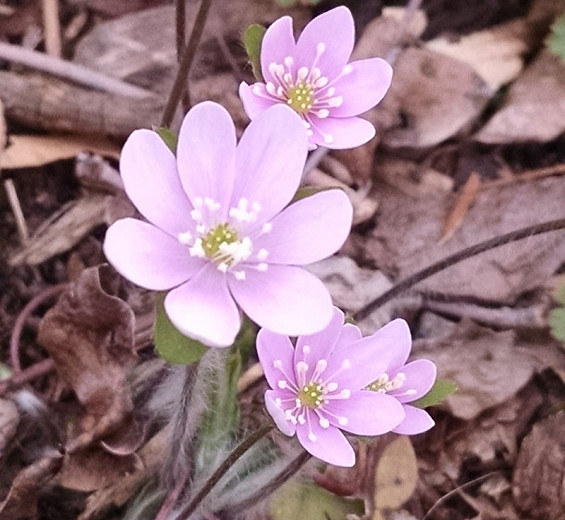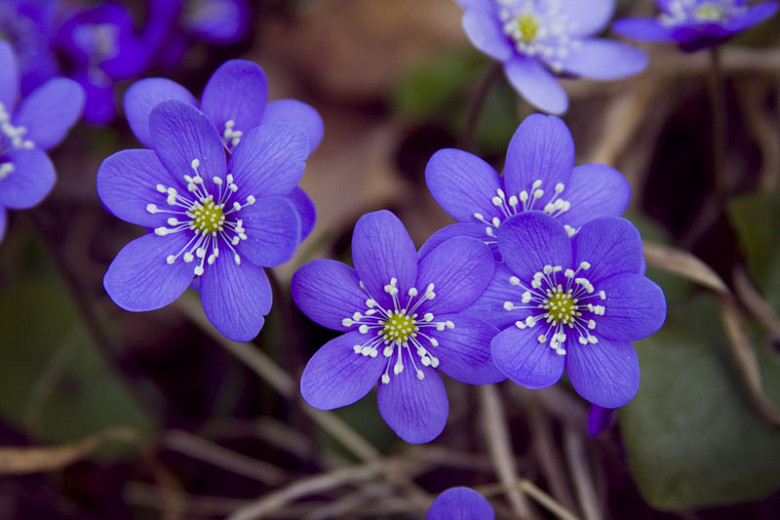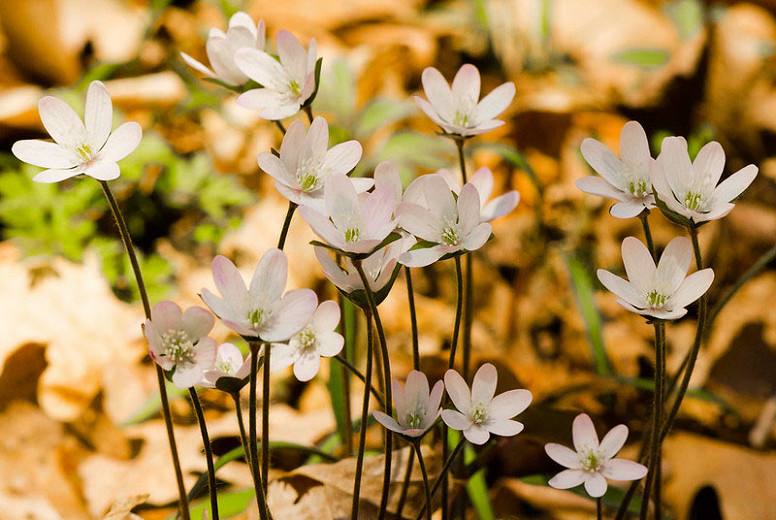Hepatica acutiloba (Sharp-Lobed Liverleaf)
One of the earliest woodland wildflowers, Hepatica acutiloba (Sharp-Lobed Liverleaf) is a clump-forming, semi-evergreen perennial producing adorable bowl-shaped flowers, 1 in. across (2.5 cm), in early spring. Usually white, the blossoms may also be pale pink or pale lavender-purple. Rich in nectar, they are an important early source for many pollinators. The flowers close at night and on cloudy days when pollinators are unlikely to be flying. Borne atop erect hairy stems, the charming blossoms appear before the new foliage. After the flowers fade, the leaves take over. Handsome, up to 3 in. long (8 cm), they are divided into three sharply pointed lobes. They turn shades of russet red and deep purple in the fall and provide year-round interest in the shade garden where evergreen. As the first spring ephemeral to bloom, Hepatica acutiloba is a jewel in the stark landscape. Low maintenance, it is best grown in places where it can remain undisturbed for years.
- Grows up to 6-8 in. tall (15-20 cm) and 5-6 in. wide (12-15 cm).
- Easily grown in humus-rich, moist, slightly alkaline, well-drained soils in part shade. Top dress annually in autumn with leaf mold. Resent root disturbance.
- Undemanding, this Hepatica is a welcomed addition to beds and borders, under shrubs and roses, as an edging plant, in city gardens, cottage gardens, rock gardens, woodland gardens, or in containers. For best visual impact, plant en masse.
- Generally disease free. Keep an eye out for slugs and snails.
- Propagate by seed sown in an open frame, as soon as ripe, or by division in spring. Transplants and divisions are slow to establish.
- Native to North America.
Requirements
| Hardiness | 3 – 8 |
|---|---|
| Climate Zones | 1, 1A, 1B, 2, 2A, 2B, 3, 3A, 3B, 4, 5, 6, 14, 15, 16, 17 |
| Plant Type | Perennials |
| Plant Family | Hepatica – Liverleaf |
| Exposure | Partial Sun |
| Season of Interest | Spring (Early)Fall |
| Height | 6" – 8" (15cm – 20cm) |
| Spread | 5" – 6" (12cm – 15cm) |
| Spacing | 5″ (12cm) |
| Water Needs | Average |
| Maintenance | Low |
| Soil Type | Chalk, Clay, Loam, Sand |
| Soil pH | Alkaline, Neutral |
| Soil Drainage | Moist but Well-Drained |
| Characteristics | Showy, Semi-Evergreen |
| Native Plants | United States, Midwest, Illinois, Indiana, Iowa, Michigan, Minnesota, Missouri, Ohio, Wisconsin, Northeast, Connecticut, Delaware, Maine, Massachusetts, Maryland, New Hampshire, New York, Pennsylvania, Vermont, Southeast, Alabama, Arkansas, Georgia, Kentucky, Mississippi, North Carolina, South Carolina, Tennessee, Virginia, West Virginia |
| Garden Uses | Beds and Borders, Edging, Patio and Containers, Underplanting Roses and Shrubs |
| Garden Styles | City and Courtyard, Gravel and Rock Garden, Informal and Cottage |




